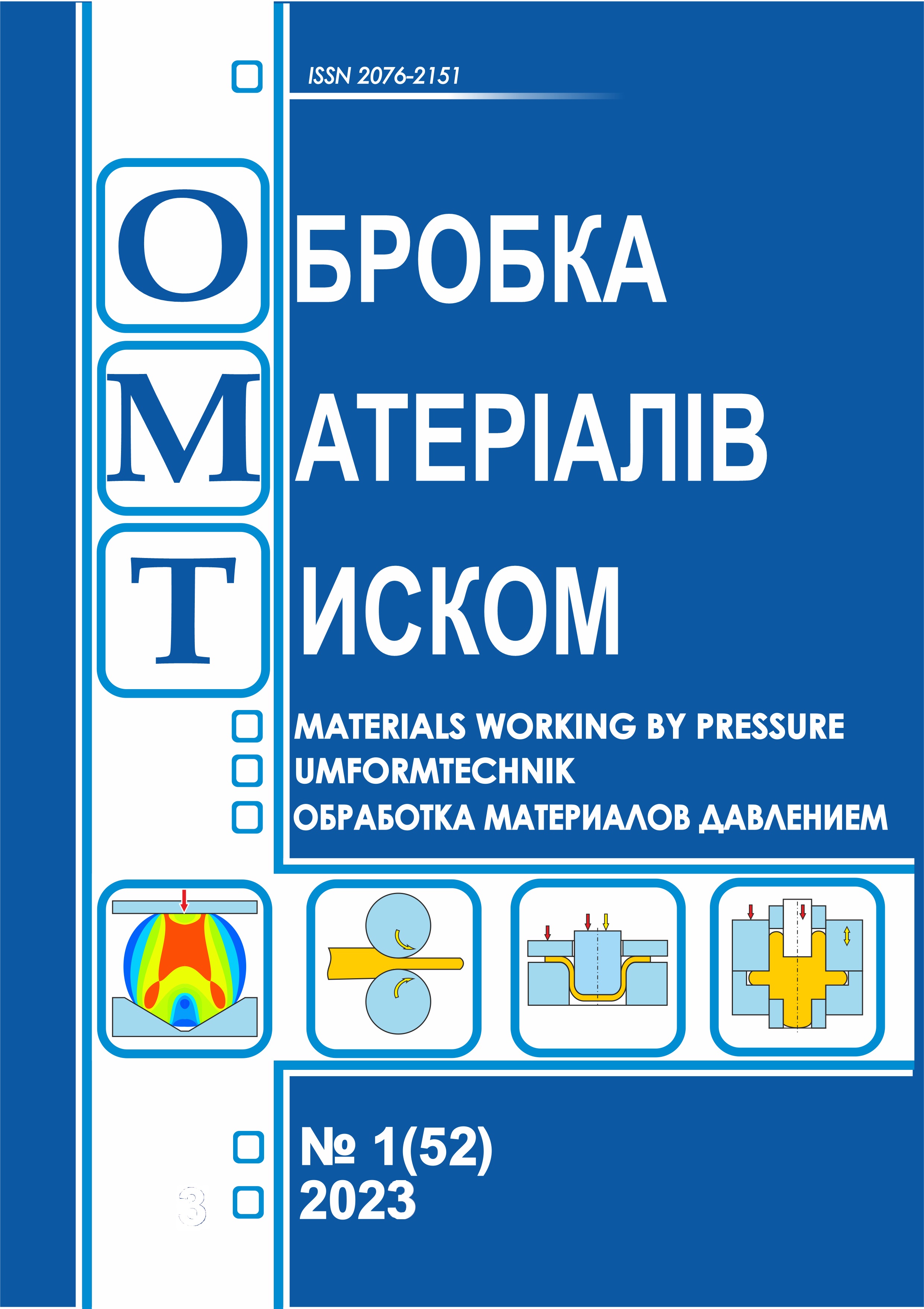Method for determining the optimal time for diagnosing elements of rolling equipment
DOI:
https://doi.org/10.37142/2076-2151/2023-1(52)189Keywords:
diagnostics, rolling equipment, optimization, bearings, gear wheels, distribution law, mathematical statistics, element damage.Abstract
Kravchenko V., Ishchenko A., Rassokhin D., Nosovska O., Kapustin S. Method for determining the optimal time for diagnosing elements of rolling equipment
A technique has been developed for optimizing the time for diagnosing groups of rolling equipment elements that fail during operation as a result of wear, fatigue phenomena, etc. In particular, this primarily refers to the failure of rolling bearings and friction pairs of rolling mills, roller tables and other machines of the entire rolling line complex. In addition, gear wheels of gearboxes of critical mechanisms, for example, a pressure device of a rolling stand, gear stands of a rolling mill drive, are subject to these damages. The diagnostics of a complex of such elements requires a lot of time and is not always possible in rolling production. It is for this reason that it became necessary to optimize the time of the next diagnosis, depending on the laws of distribution of the rate of change in the indicators of damage accumulation taken as a basis, which are determined by fixing statistical data on the elements of rolling equipment. In turn, these statistics should take into account the results of replacements of failed elements of rolling equipment and correct these statistics in accordance with the changes that have occurred. In turn, these statistics should take into account the results of replacements of failed elements of rolling equipment and adjust these statistics in accordance with the changes that have occurred. Such a replacement provides for the selection of rolling equipment elements that do not ensure the equipment operation due to damage, and at the same time forms a vector of distribution of elements, which replacement is expedient. As a consequence of such a replacement, it becomes necessary to form a distribution vector for the accumulation of damage in newly installed elements. For further consideration of the question of the probability of element damage, it is necessary to use the law of distribution of the damage accumulation rate and its parameters by the method of mathematical statistics. The results obtained by means of an optimization technique can be used to improve the efficiency of service maintenance of rolling equipment, the depletion of resources of which can be assessed by means of technical diagnostics.
References
Baglai A. V., Verenev V. V. Dynamics and diagnostics of gaps in cages with bagatonic rolling. Technical Diagnostics & Nondestructive Testing / Tekhnicheskaya Diagnostika I Nerazrushayushchiy Kontrol. 2020. Issue 3. pp. 58-60. (in Ukrainian).
Krot Pavlo, Korennoi Volodymyr Vibration Diagnostics of Rolling Mills Based on Nonlinear Effects in Dynamics. Dynamics and maturity of machines. Bulletin of NTU “KhPI”. 2016. No. 26 (1198). pp. 118-123.
Yavorsky I.M., Yuzefovich R.M., Kravets I.B. Development of a vibro-diagnostic system for identifying defects in the industrial property using various methods of non-stationary statistical processing of vibrating and acoustic coliving. Technical diagnostics and non-destructive testing. 2015. No. 4. pp. 36–41. (in Ukrainian).
Xiaochan Liu, Yong Zang, Zhiying Gao, Lingqiang Zeng Time Delay Effect on Regenerative Chatter in Tandem Rolling Mills. Shock and vibration. Vol. 2016. 15 p. 2016. https://doi.org/10.1155/2016/4025650
Ishchenko A. A., Kravchenko V. M., Sidorov V. A. Diagnostics and repair of industrial equipment composite materials. LAP LAMBERT Academic Publishing. 2020. 136 p. ISBN 978-620-2-79959-1.
Semenchenko A. K., Kravchenko V. M., Shabaev O. E. Theoretical foundations of analysis and synthesis of mining machines and the process of their recovery as dynamic systems. Donetsk: RVA DonNTU. 2002. 302 p. (in Russian).
Kiyanovsky N. V. Multi-criteria optimization of equipment reliability assurance processes. Sat. scientific Proceedings of the NGA of Ukraine, No. 3, volume No. 6. Mining machines and complexes. Dnepropetrovsk: RIK NGA of Ukraine. 1998, pp. 166–170. (in Russian).
Verenev V. V. et al. Diagnostics and dynamics of rolling mills. Dnepropetrovsk. IMA-press. 2007. 144 p. ISBN: 978-966-331-161-6. (in Russian).
Jingming Ding Fault detection of a wheelset bearing in a high-speed train using the shock-response convolutional sparse-coding technique. Measurement. 117 (2017). pp.108–124.
Yu Pang, et al. Design and implementation of automatic fault diagnosis system for wind turbine. Comput. Electr. Eng. 87 (2020). 106754.
B. Cai, H. Liu, M. Xie A real-time fault diagnosis methodology of complex systems using object-oriented Bayesian networks. Mech. Syst. Sig. Process. 80 (2016). pp. 31–44.
Baoping Cai, Liu, et al. A dynamic-bayesian-network-based fault diagnosis methodology considering transient and intermittent faults. IEEE Trans. Autom. Sci. Eng. 14 (1) (2017). pp. 276–285.
R. Arsenault Treatise on materials science and technology. Plasticdeformation of materials, vol. VI. Academic Press. Inc. New York. 1975.
Rolling bearings – Damage and failures - Terms, characteristics and causes, ISO 15243:2004(E), 2004.
M.A. Maleque, M.S. Salit Materials Selection and Design, Springer, 2013.
Example type B report wind turbine blade pitch bearing analysis, Tech. rep.,JAD analysis, 2015.
I. Kovaˇríkov´ a, B. Szewczykov´ a, P. Blaˇskoviˇs, E. Hodúlova, ´ E. Lechovic Studyand characteristic of abrasive wear mechanisms. Mater. Sci. Technol. (2009). pp. 1335–9053.
Yubin Pan, Rongjing Hong, Jie Chen, Zhongwei Qin, Yang Feng Incipient fault detection of wind turbine large-size slewing bearing based on circular domain. Measurement. Volume 137. 2019.Pages 130-142. ISSN 0263-2241. https://doi.org/10.1016/j.measurement.2019.01.033.
Zepeng Liu, Long Zhang, Joaquin Carrasco Vibration analysis for large-scale wind turbine blade bearing fault detection with an empirical wavelet thresholding method. Renewable Energy. Volume 146. 2020. Pages 99-110. ISSN 0960-1481. https://doi.org/10.1016/j.renene.2019.06.094

